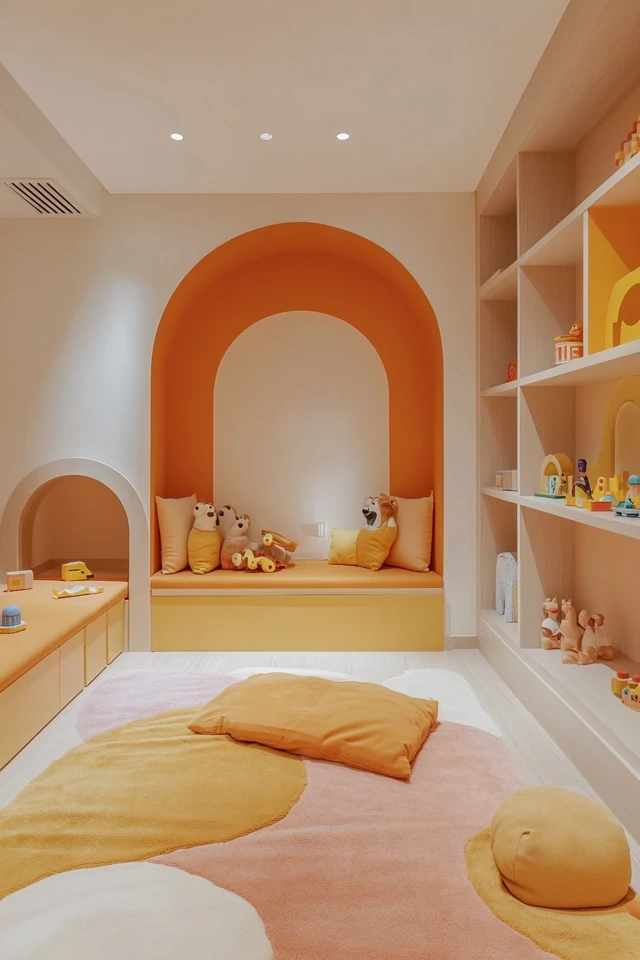Designing a playroom for kids often feels like stepping into a whirlwind of toys, bright colors, and endless clutter. But it doesn’t have to be that way! A minimalist playroom offers a solution by creating a space that is functional, calming, and easy to maintain—all while leaving room for creativity and fun.
When I first set out to design a playroom for my kids, I was overwhelmed by the sheer number of toys and items we had accumulated over the years. It seemed impossible to keep it tidy for more than five minutes. That’s when I decided to embrace a minimalist approach. By decluttering and focusing on intentional design, the space became easier to manage and much more enjoyable for everyone. My kids loved it, and I found peace in the simplicity.
If you’re looking to design a minimalist playroom that’s both stylish and child-friendly, here’s how to do it.
Why Choose a Minimalist Playroom?
- Encourages Creativity: A simple space with fewer distractions allows kids to focus and use their imagination.
- Easier to Clean: Minimal clutter makes tidying up quick and stress-free.
- Calming Environment: Neutral tones and clean lines create a soothing atmosphere for both kids and parents.
- Teaches Organization: A well-designed playroom helps kids learn the value of tidiness and intentionality.
1. Start With a Declutter Session
Why It Works:
A clutter-free playroom sets the foundation for a minimalist design.
How to Do It:
- Sort toys into three categories: keep, donate, and discard.
- Focus on keeping high-quality, versatile toys that your child truly enjoys.
- Rotate toys every few months to keep the space fresh and prevent boredom.
Pro Tip: Involve your kids in the process to teach them about decluttering and decision-making.
2. Stick to a Neutral Color Palette
Why It Works:
Neutral tones create a calming environment and make the space feel more cohesive.
How to Do It:
- Use whites, beiges, or soft grays for walls and larger furniture pieces.
- Add pops of color through toys, books, or a rug to keep it playful.
- Avoid overly bright or clashing colors that can overwhelm the space.
Pro Tip: Consider washable wall paint or peel-and-stick wallpaper for easy maintenance.
3. Invest in Multi-Functional Furniture
Why It Works:
Multi-functional pieces save space and reduce the need for excess furniture.
How to Do It:
- Use a storage bench or ottoman that doubles as seating.
- Opt for tables with built-in storage for art supplies or puzzles.
- Choose stackable chairs or foldable play mats for versatility.
Pro Tip: Look for furniture with clean lines and natural finishes to maintain the minimalist aesthetic.
4. Incorporate Open and Closed Storage
Why It Works:
A mix of open and closed storage keeps the playroom tidy while allowing easy access to toys.
How to Do It:
- Use open shelves or bins for frequently used toys, making them accessible for kids.
- Store less-used or seasonal items in closed cabinets or labeled baskets.
- Choose storage units that are kid-height to encourage independence.
Pro Tip: Stick to matching baskets or bins to create a cohesive and clutter-free look.
5. Limit the Number of Toys on Display
Why It Works:
Fewer toys on display reduce visual clutter and help kids focus on one activity at a time.
How to Do It:
- Rotate toys regularly to keep the space feeling fresh and exciting.
- Use a toy rotation system where only a few items are out at any given time.
- Display toys in an organized way, like on a shelf or in a clear bin.
Pro Tip: Avoid overstuffing bins or baskets—leave space for everything to “breathe.”
6. Add a Dedicated Play Zone
Why It Works:
A defined play area helps organize activities and keeps the room functional.
How to Do It:
- Use a soft rug or foam mat to designate a play zone.
- Add a small table and chairs for art projects or puzzles.
- Create a cozy reading nook with bean bags or floor cushions.
Pro Tip: Keep the play zone flexible so it can adapt as your child’s interests change.
7. Embrace Natural Light
Why It Works:
Natural light makes the playroom feel bright, open, and inviting.
How to Do It:
- Position the playroom near a window to maximize sunlight.
- Use sheer curtains or blinds to let in light while maintaining privacy.
- Add a floor lamp or soft overhead lighting for darker times of day.
Pro Tip: Avoid heavy, dark curtains that block light and make the space feel smaller.
8. Incorporate Minimal Decor
Why It Works:
Simple decor adds personality without overwhelming the space.
How to Do It:
- Hang a few framed prints or child-friendly artwork on the walls.
- Add a small plant or a wooden growth chart for natural touches.
- Use a decorative basket or soft blanket for cozy vibes.
Pro Tip: Keep decor to a minimum to let the toys and furniture shine.
9. Focus on Quality Over Quantity
Why It Works:
High-quality, durable items last longer and reduce the need for frequent replacements.
How to Do It:
- Choose sturdy wooden toys or eco-friendly materials over plastic alternatives.
- Invest in furniture that can grow with your child, like adjustable desks or modular storage.
- Opt for timeless designs that won’t go out of style.
Pro Tip: Quality items also encourage kids to take better care of their belongings.
10. Keep It Easy to Maintain
Why It Works:
A playroom that’s easy to clean up ensures it stays functional and enjoyable.
How to Do It:
- Use washable rugs, mats, and wall paint for quick cleanups.
- Label storage bins to make it easy for kids to put things back in the right spot.
- Establish a daily cleanup routine as part of your child’s playtime.
Pro Tip: Use a timer to make clean-up time fun and engaging for your kids.
Picture Gallery
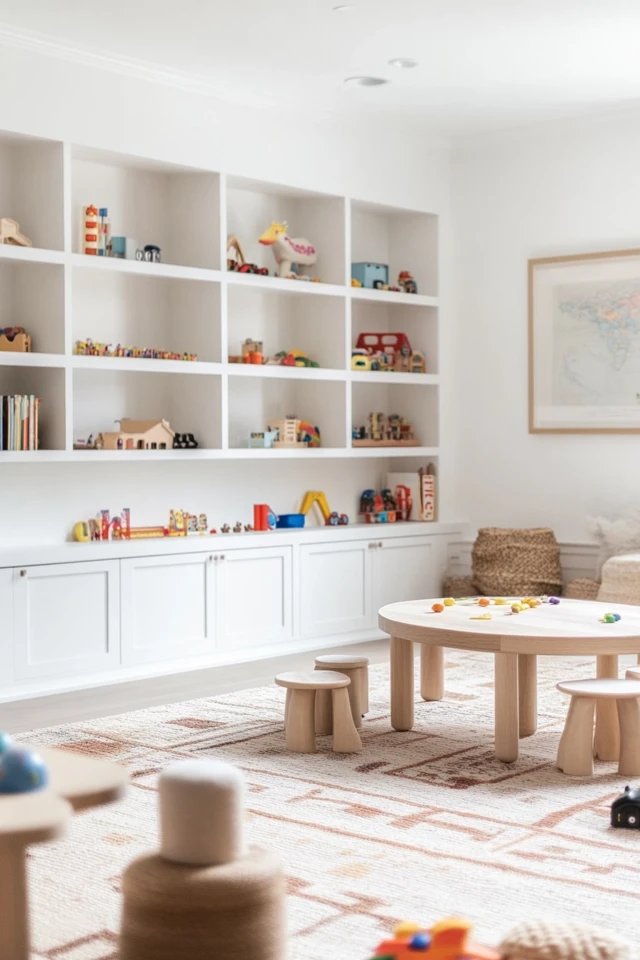
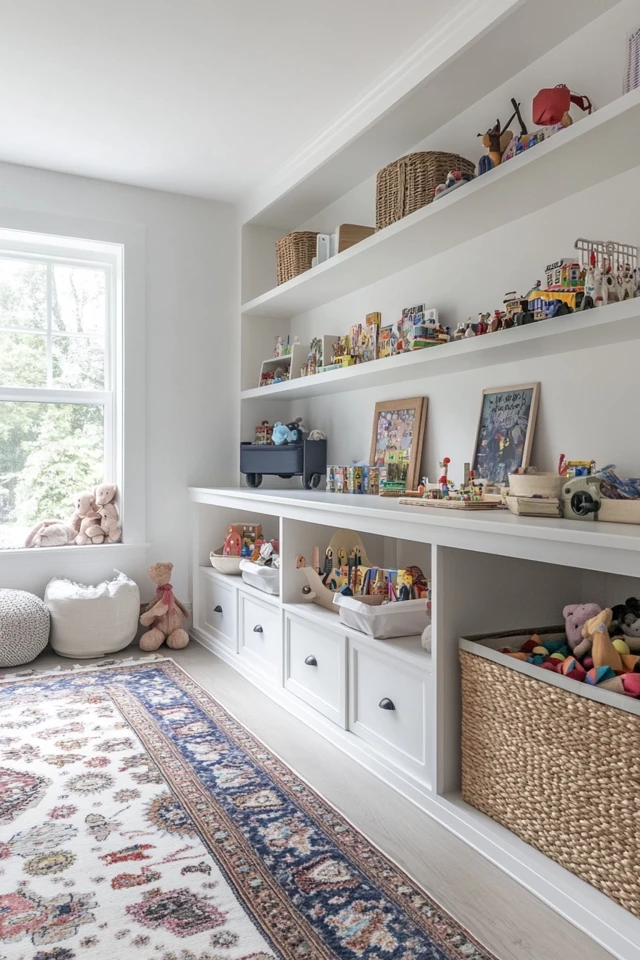
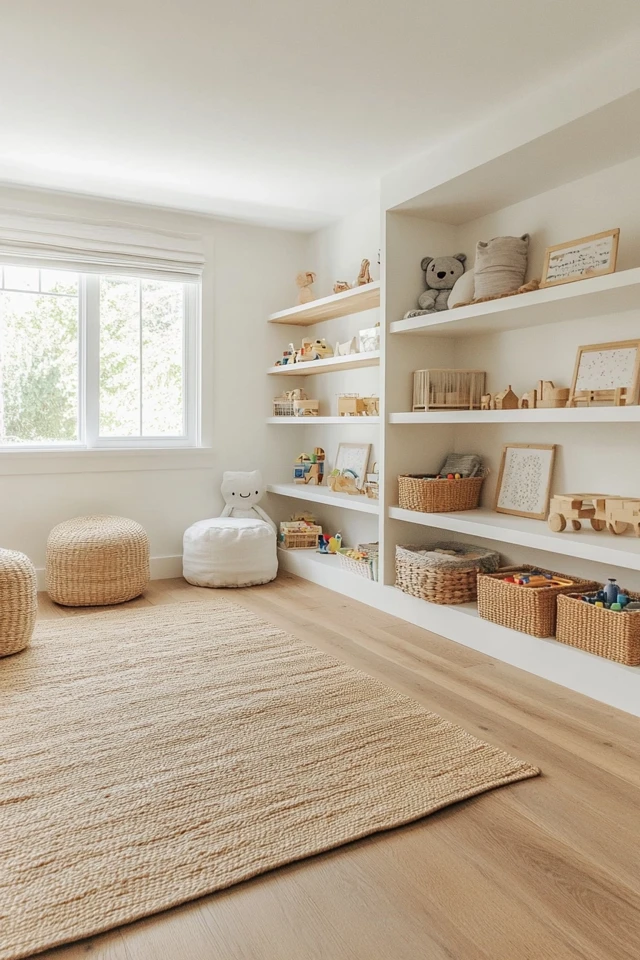

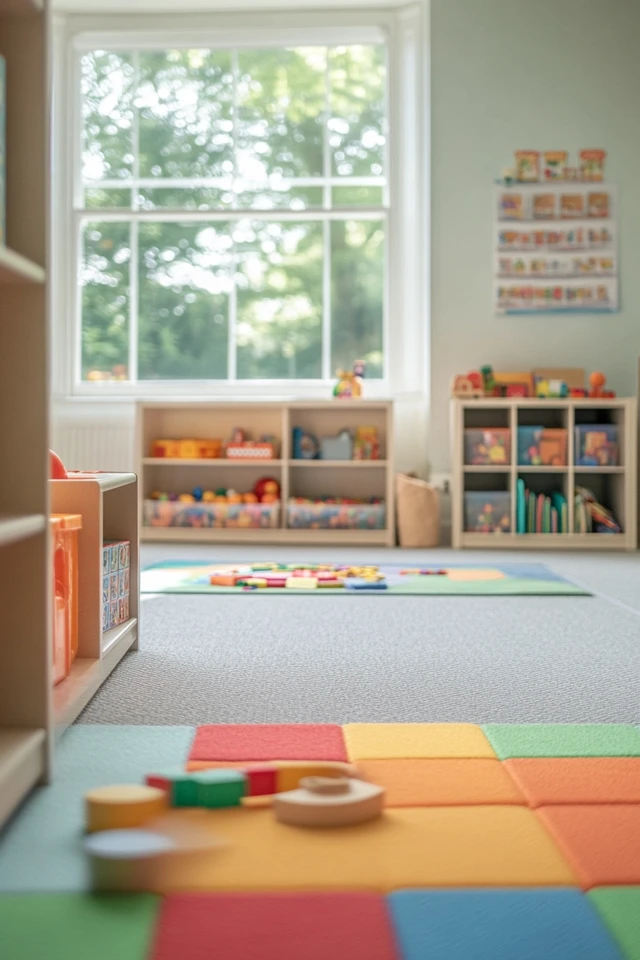
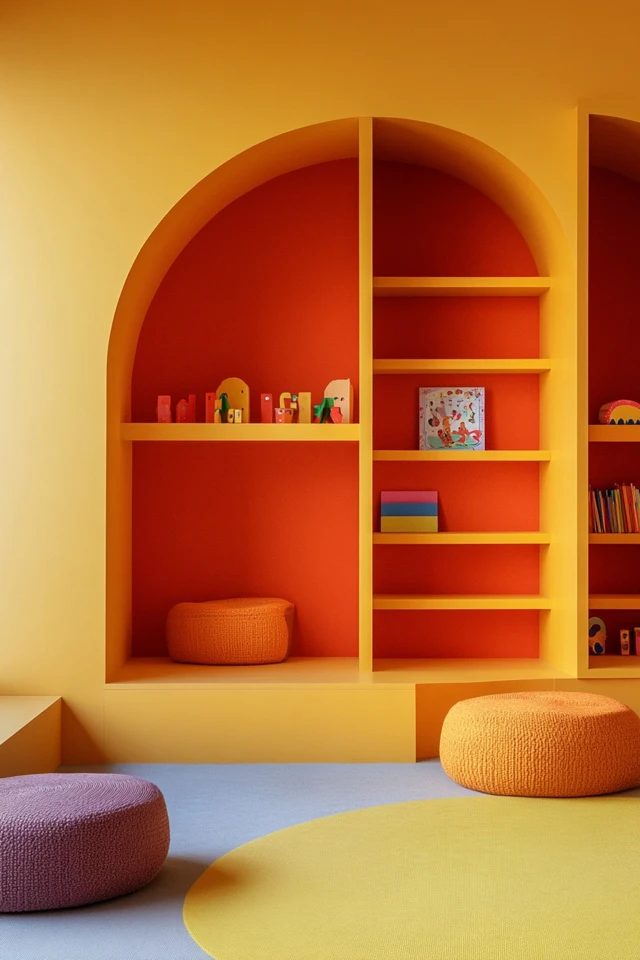
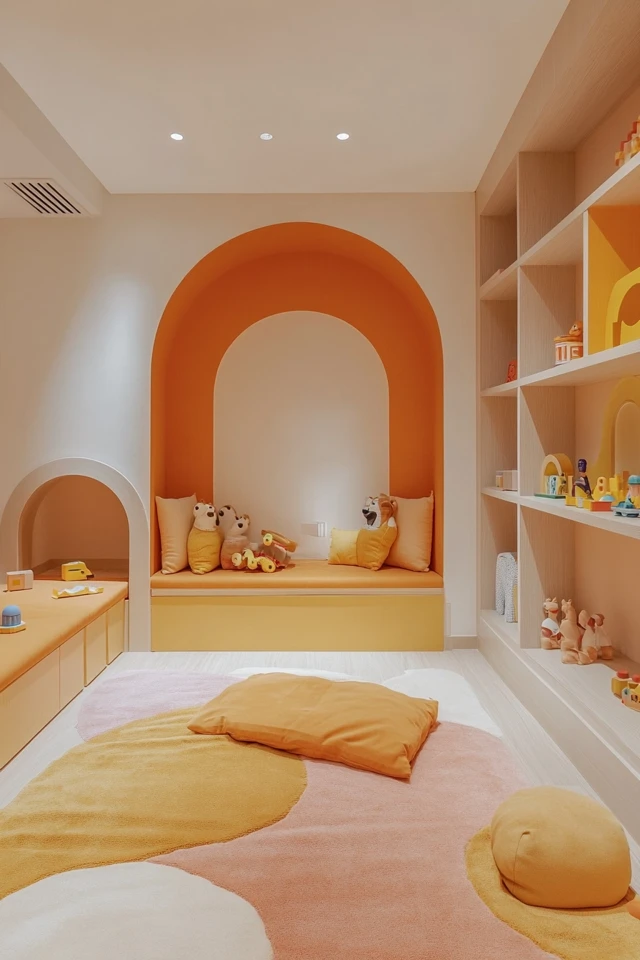
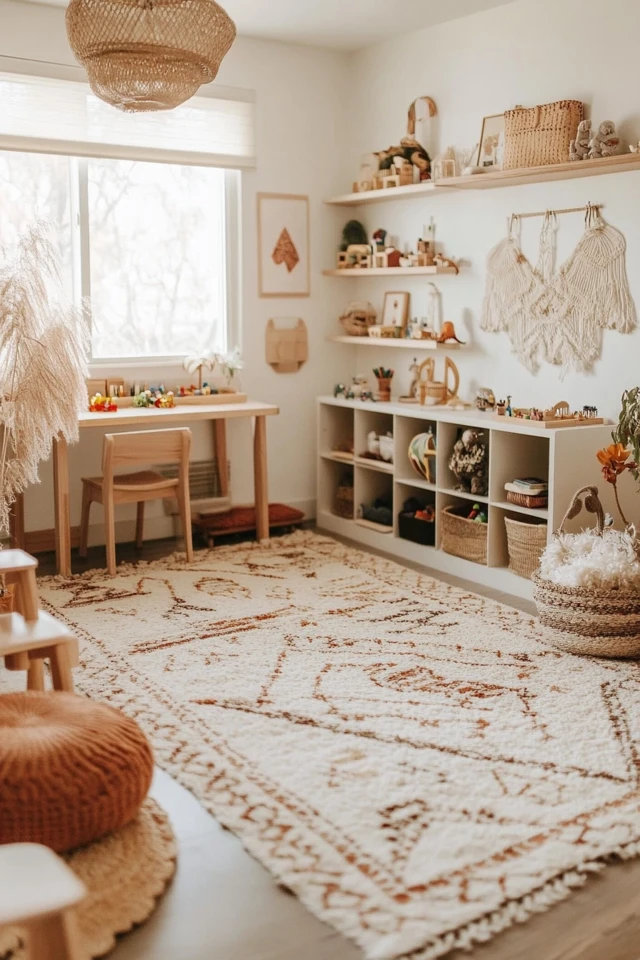
Conclusion
A minimalist playroom is the perfect balance between style, functionality, and fun. By focusing on quality over quantity, incorporating smart storage solutions, and creating a calm, clutter-free environment, you can design a space that grows with your child and encourages creativity.
Minimalist design doesn’t mean sacrificing personality or playfulness—it’s about being intentional and thoughtful with your choices. Whether it’s a cozy reading nook, a small craft area, or a toy display, the key is to keep things simple, adaptable, and full of joy.
FAQs
1. How do I maintain a minimalist playroom as my child grows?
Choose furniture and storage that can adapt to your child’s changing needs, and declutter regularly to remove items they’ve outgrown.
2. What type of toys work best in a minimalist playroom?
Opt for open-ended toys like blocks, puzzles, or art supplies that encourage creativity and can be used in multiple ways.
3. How can I make a minimalist playroom cozy?
Add soft textures like rugs, cushions, or blankets, and incorporate warm lighting to make the space inviting.
4. What’s the best way to organize a small playroom?
Use vertical storage like shelves or wall hooks to save floor space, and rotate toys to avoid overcrowding.
5. Can a minimalist playroom still be fun for kids?
Absolutely! Minimalism doesn’t mean boring—it creates space for creativity and ensures the room is filled with items your child truly enjoys.

